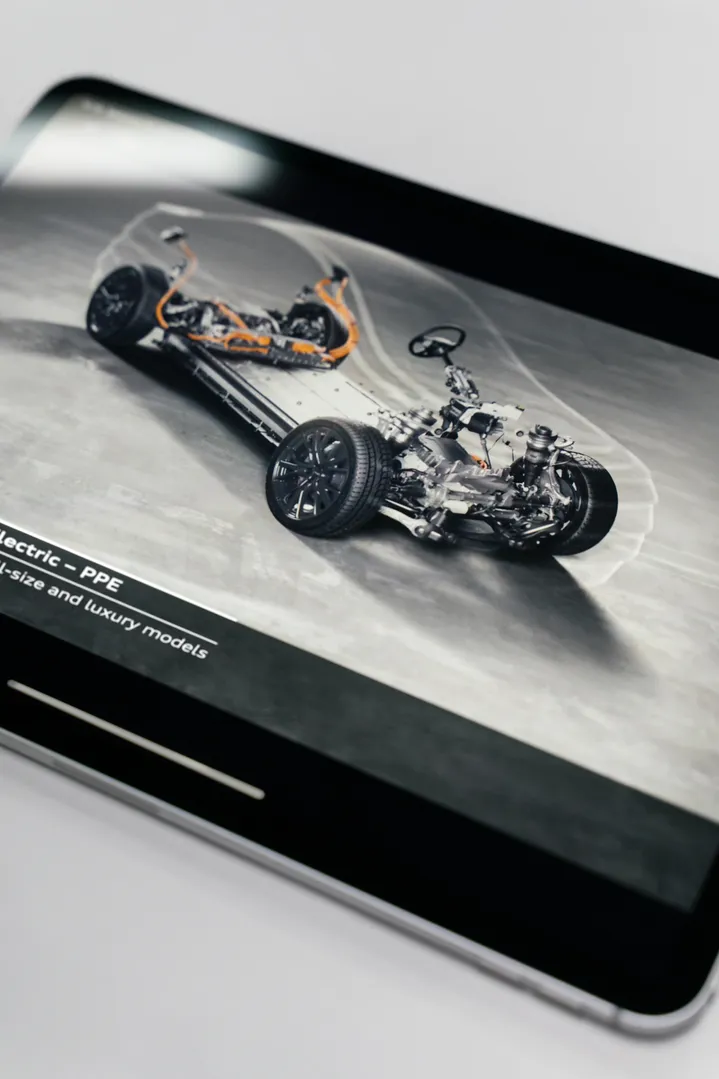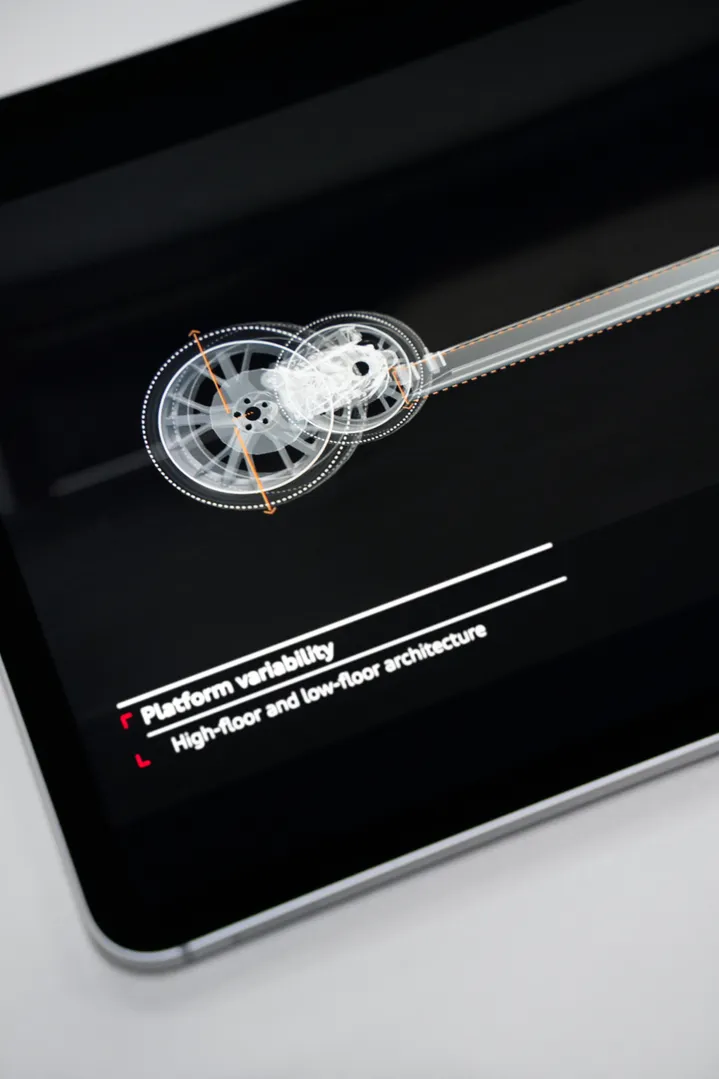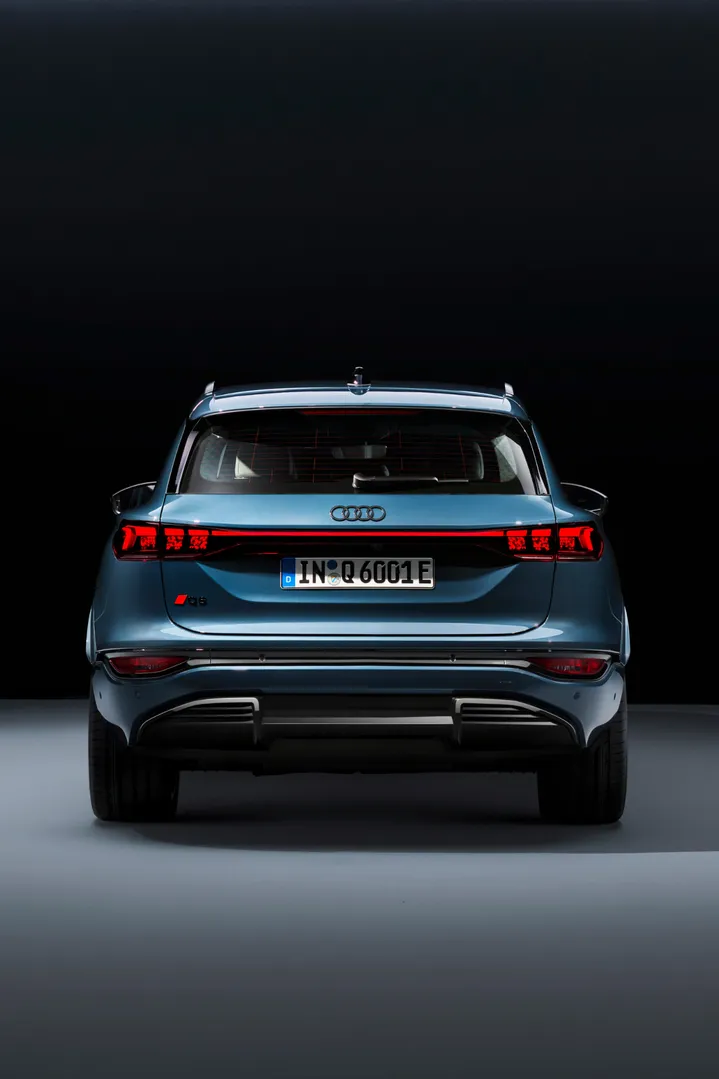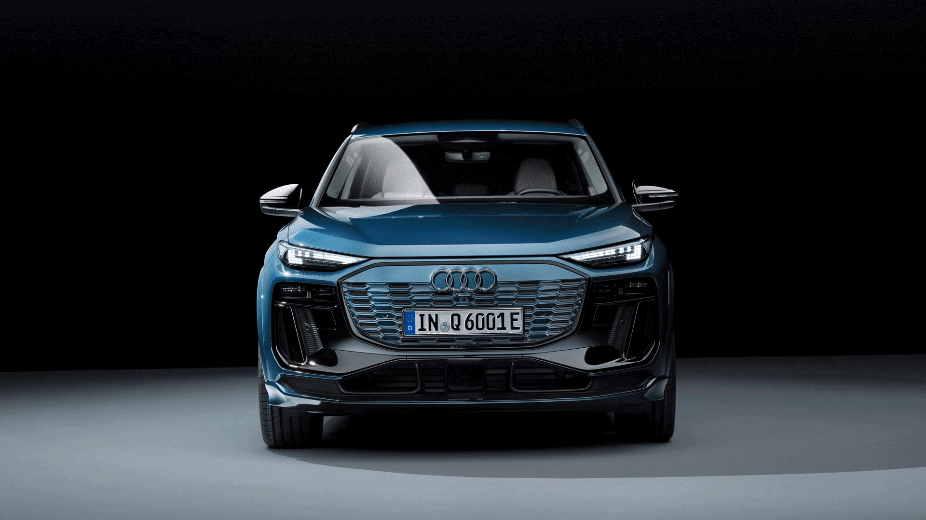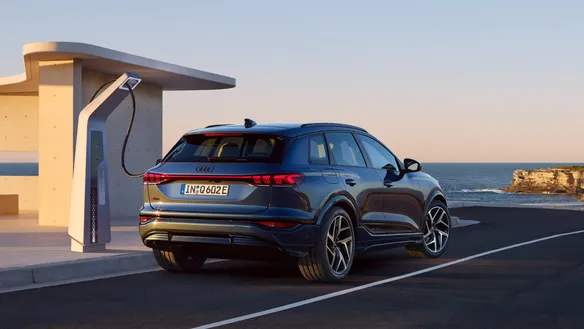The new basis for electrified driving experiences
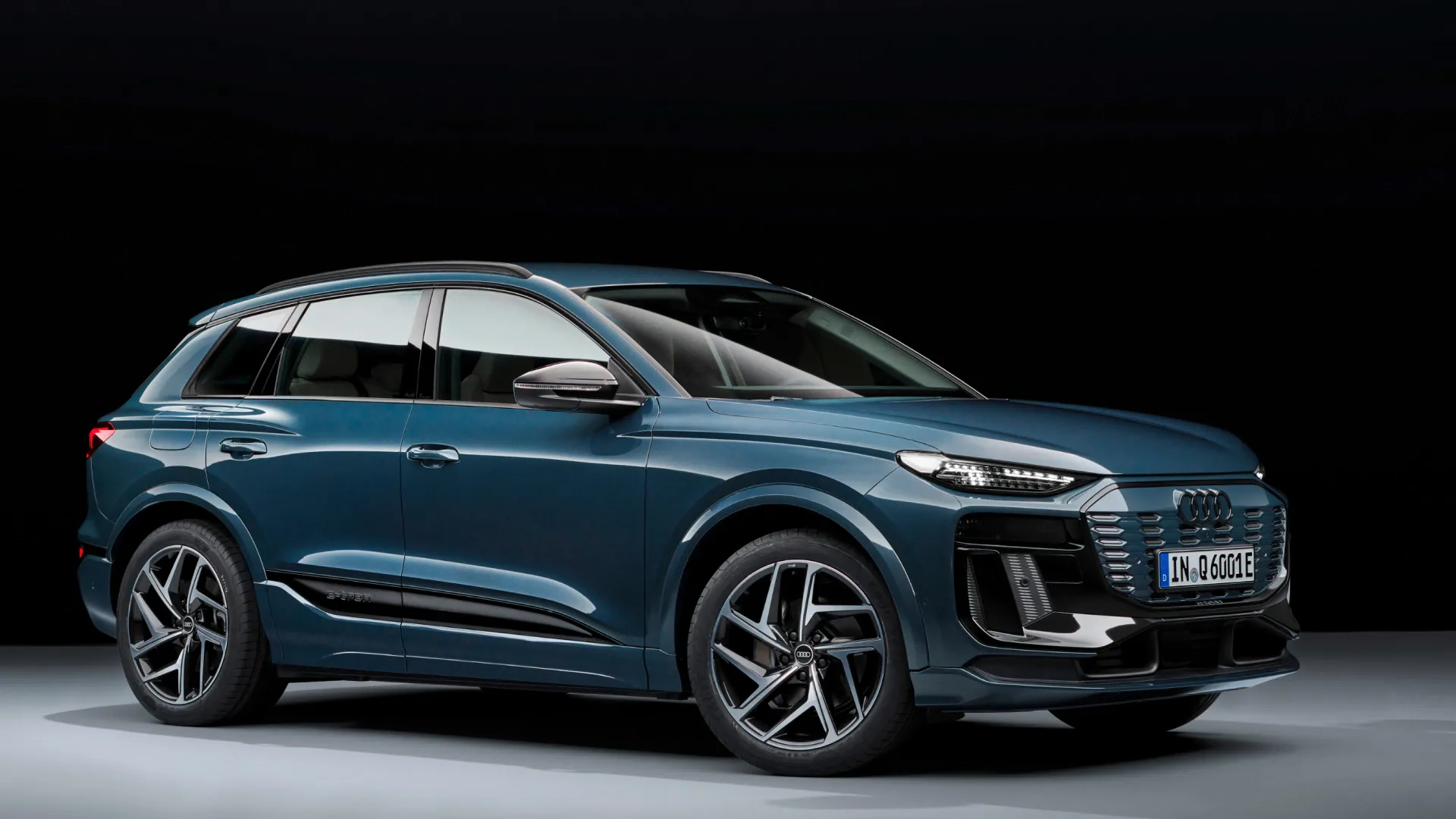
With the new all-electric Audi Q6 e-tron, Audi is systematically expanding its range of purely electric vehicles. The SUV impresses with its driving and charging performance, efficiency, range and interior experience. This is made possible by a platform developed specifically for e-mobility. The models in the Audi Q6 e-tron series are the brand’s first models to be based on the new Premium Platform Electric (PPE), which Audi developed together with Porsche.
“The great thing about a platform like PPE is its high degree of flexibility,” enthuses Peter Hirschfeld, responsible for product marketing for the Audi Q6 e-tron and also for the models that Audi will be offering on the basis of PPE in the future. The platform functions like a modular system, helping you to adapt the wheelbase, track width and vehicle height, for instance, depending on the requirements of the planned vehicle. PPE, he says, is a major step forward in designing premium electric mobility and is fully in line with the brand’s concept of “Progress through technology”.
Consistently designed for premium e-mobility
The package, i.e. the arrangement of the individual components of an electric vehicle, offers greater freedom than combustion vehicles do. “This results in visible and tangible advantages for our customers, for example in terms of design or suitability for everyday use.” When designing the PPE, particular emphasis was placed on the exterior, enabling the long wheelbases and short overhangs that characterise the premium segment. “Sportiness and superior design are visible in these features, which are deeply rooted in Audi’s DNA,” Hirschfeld explains.
In addition, a long wheelbase combined with electric drive technology enables a more spacious interior. “This in turn literally leaves room to develop new experiences that we want to offer our customers inside the vehicle.” And above all, Hirschfeld has their perspective in mind. “My job at Audi is to think from our customers’ point of view, to incorporate their requirements into model development and to carry them through to market launch and the entire life cycle.”
“The total package of the new Audi Q6 e-tron based on PPE is really impressive.”
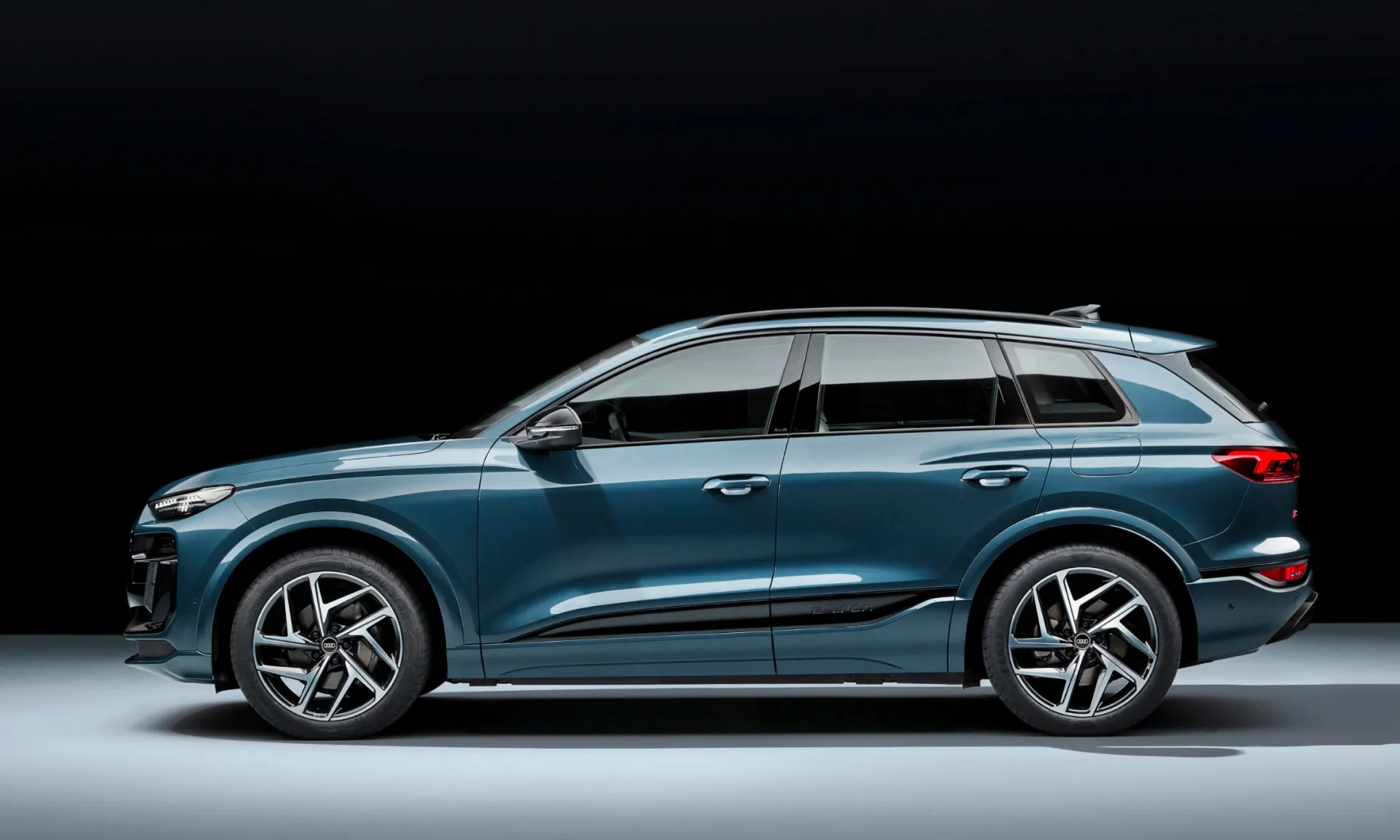
Seeing things from the customers’ perspective
In addition to the attractive design, Peter Hirschfeld focuses on three other topics that are essential for modern mobility and that have also played a key role in the development of PPE: “People primarily expect a fully electric Audi to have a range suitable for long journeys, high charging performance and, finally, a typical Audi driving experience.” Improvements to the battery and electric motors used in PPE vehicles such as the Audi Q6 e-tron have significantly reduced energy consumption. At the same time, factors such as power density, i.e. kilowatts per kilogramme of vehicle weight, and torque density, i.e. Newton metres per kilogramme, have been significantly increased. “The developers and engineers of PPE basically looked at pretty much every relevant component of an electric vehicle down to the smallest detail and looked for optimisation potential,” explains Hirschfeld. The result: In the new Audi Q6 e-tron, a range of over 620 kilometres¹ is possible.
“But if you’re talking about range in connection with electric vehicles you also have to mention the charging speed in the same breath,” says Hirschfeld. PPE comes with an 800-volt on-board electrical system, enabling the Audi Q6 e-tron to be charged with up to 270 kW². Thanks to the efficient thermal management of the HV battery, this can enable a jump from 10 to 80 per cent² in just over 20 minutes at appropriately equipped charging points. “The thermal management system not only cools, but it also preconditions the battery to achieve high charging performance even in cold outside temperatures. Recharging for a range of over 250 kilometres in around ten minutes² has thus become realistic in the Audi Q6 e-tron.”
Feeling? Typical Audi in every respect!
And the typical Audi feeling? “You’ll soon be able to experience it for yourself in the Audi Q6 e-tron,” promises Hirschfeld. He already had the chance to experience it for himself on test drives. Apart from the driving experience, this also includes the increasingly important capacity for digital services and experiences. “That’s why a new electronics architecture called E³ 1.2 was co-developed alongside PPE.” This is characterised not only by high-performance networking of control units and domain computers, but it also integrates numerous customer-relevant backend services. Most importantly, however: The new electronics architecture is an enabler for new functions and future innovations.
What Hirschfeld describes can already be felt today when you take a seat in the new Audi Q6 e-tron. The display and operating concept has been completely revised, and there are new functions and features, for example when it comes to navigation. The E³ ensures a seamless digital experience in the . “We are creating a digital stage and utilising the spaciousness of the interior for special experiences.” For drivers and now also for passengers, who can use their own networked screen inside the Audi Q6 e-tron.
“I think driving electrically is addictive. But the total package of the Audi Q6 e-tron based on PPE – this combination of chassis, new electric motors, everyday usability and interior experience – is really impressive.”
¹The range varies between 540-625 kilometres depending on the selected equipment of the vehicle.
²The charging time of the battery, the maximum DC charging capacity at High Power Charging (HPC) charging stations and the topped-up range were calculated according to DIN 70080 and can vary depending on a number of different factors including ambient and battery temperature, the use of other country-specific connectors, the use of the preconditioning function (e.g. remote-controlled air conditioning of the vehicle), the capacity available at the charging station, state of charge and battery ageing. Charging capacity is reduced as the state of charge increases. Charging losses are considered.
¹The range varies between 540-625 kilometres depending on the selected equipment of the vehicle.
²The charging time of the battery, the maximum DC charging capacity at High Power Charging (HPC) charging stations and the topped-up range were calculated according to DIN 70080 and can vary depending on a number of different factors including ambient and battery temperature, the use of other country-specific connectors, the use of the preconditioning function (e.g. remote-controlled air conditioning of the vehicle), the capacity available at the charging station, state of charge and battery ageing. Charging capacity is reduced as the state of charge increases. Charging losses are considered.
